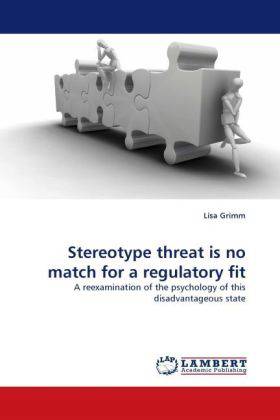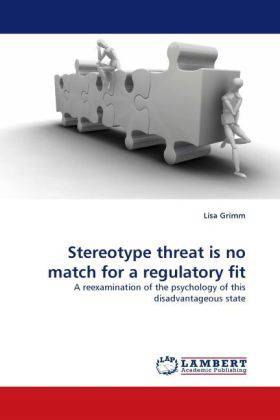
- Afhalen na 1 uur in een winkel met voorraad
- Gratis thuislevering in België vanaf € 30
- Ruim aanbod met 7 miljoen producten
- Afhalen na 1 uur in een winkel met voorraad
- Gratis thuislevering in België vanaf € 30
- Ruim aanbod met 7 miljoen producten
Zoeken
Stereotype threat is no match for a regulatory fit
A reexamination of the psychology of this disadvantageous state
Lisa Grimm
Paperback | Engels
€ 59,95
+ 119 punten
Omschrijving
Over a decade ago, academic psychologists demonstrated that low academic performance by students could be explained by negative stereotypes ascribed to their racial, gender, or cultural groups. For example, researchers have argued that the stereotype that women are bad at math leads women to underperform on math tests relative to men. This monograph describes research studies that were inspired by regulatory fit theory and reviews the literatures on stereotype threat and regulatory fit. The regulatory fit approach is used to explore the benefits of placing individuals in appropriate task environments as a way to remove the influence of the negative stereotype. As such, this monograph challenges the conventional view that it is the negative stereotype that undermines performance. Critically, this approach suggests a method to improve performance of stigmatized groups without initially embarking on the difficult task of changing cultural stereotypes. This reinterpretation of stereotype threat will be of interest to social and cognitive psychologists, educators, graduate and advanced undergraduate students, and anyone else fascinated by the influence of stereotypes on performance.
Specificaties
Betrokkenen
- Auteur(s):
- Uitgeverij:
Inhoud
- Aantal bladzijden:
- 104
- Taal:
- Engels
Eigenschappen
- Productcode (EAN):
- 9783838348193
- Verschijningsdatum:
- 28/06/2010
- Uitvoering:
- Paperback
- Afmetingen:
- 152 mm x 229 mm
- Gewicht:
- 163 g

Alleen bij Standaard Boekhandel
+ 119 punten op je klantenkaart van Standaard Boekhandel
Beoordelingen
We publiceren alleen reviews die voldoen aan de voorwaarden voor reviews. Bekijk onze voorwaarden voor reviews.








